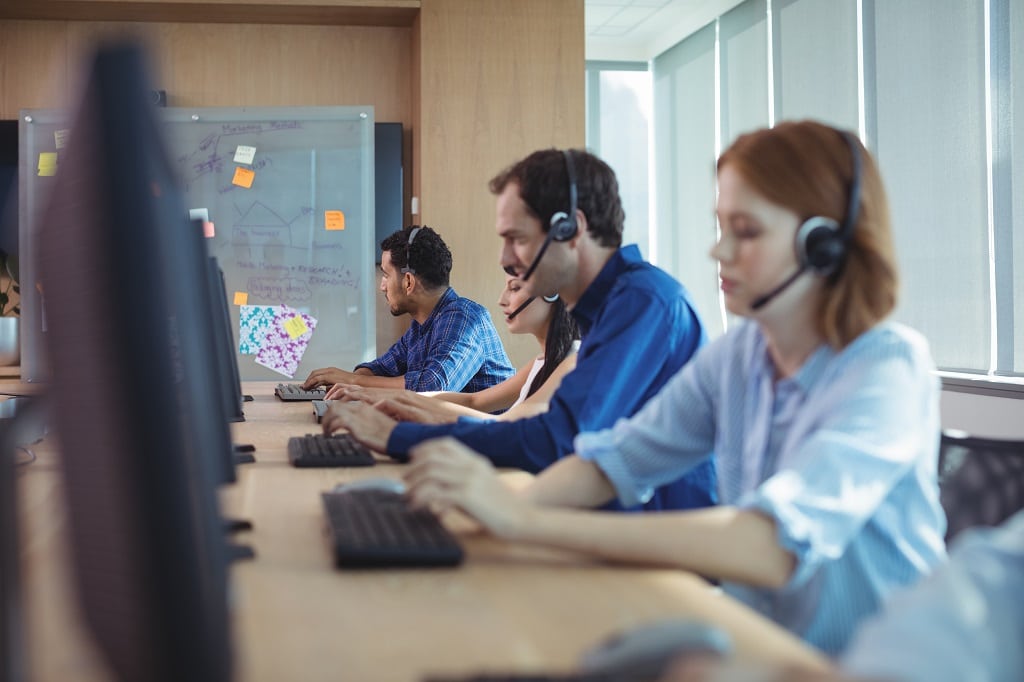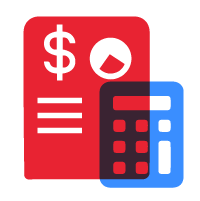Managing businesses in their entirety is taxing because it requires a pool of skilled workers just for the business to succeed. This is why companies are drawn to business process outsourcing since it aids in achieving flexible operations. Of course, you want to make sure everything is seamless. However, it is also important to keep in mind that people—the workers—are the most significant part of building an organization.
Every business owner knows how difficult it is to run a company. A lot needs to be thought through and decided on. You want to make sure you prepare thoroughly before starting any type of business. Nonetheless, you have to remember that things may go sideways. To run a successful business, you must adapt to changing situations.
This takes us to large firms that work for huge projects, which have employed various BPO models. What are they? Learn which one fits your business as we discuss each BPO model and types of vendor.
What is a BPO model?
Business process outsourcing models are the different ways of handling certain operations and company projects. Since BPO is a method of subcontracting various business-related operations to third-party vendors, BPO model then refers to the different business model for business process outsourcing. These models may vary according to service provider capabilities, as well as client needs and expectations.
Related Article:
Types of Outsourcing Services to Consider for Your Business Needs
BPO Models and Types of Vendors
BPO models are concepts of business models related to BPO. The operation of an outsourcing business and the services it provides to clients are generalized in BPO models. The models are constructed based on the clients’ goals, needs, and geography.
For better understanding how BPOs work, let’s discuss the BPO models and types of vendors.
Types of BPO Models
1. Global Outsourcing Model
Most major companies that offer a wide range of services frequently choose this outsourcing approach. To finish large projects, they collaborate and link up with enterprises abroad in addition to those in the nation. In this case, clients contract out work to several specialist companies in various nations. In addition to benefiting individuals in developing nations, this arrangement benefits both sides. As a consequence, the project is profitable for the customer, and service companies will profit greatly as a result.
2. Joint Venture Model
In this BPO model, two companies sign a joint contract under which they would split assets, earnings, and even losses. Additionally, the terms and conditions frequently stipulate that the client company and the service provider will split the personnel, resources, and time until the project is finished.

3. Offshoring Model
In this model, a corporation instead spreads out throughout multiple nations, with the main company overseeing staff training. In addition to delegating some of their work to other businesses, they also share jobs across the branches. They may use this strategy to make the most of their resources and reduce operating expenses while retaining control over their workflow and service delivery. Additionally, this approach enables the parent company to tap market possibilities and grow closer to clients where they outsource.
4. Project-Based Model
As the name implies, project-based outsourcing benefits businesses with irregular or sporadic tasks. The majority of these projects have low to medium complexity along with well-defined objectives and criteria. Companies outsource them so they may carry on with their usual business operations and, at the same time, pay a dedicated workforce to concentrate on the task.
5. Staff Leasing Model
Under this BPO model, a corporation outsources a small group of people or a portion of their time rather than a whole team or business. When businesses want the services of higher skilled workers but not on a full-time basis, they frequently pick this option. A few of them engage personnel to provide additional services they are lacking or if they are unable to put together a new internal team.

Download the Types of BPO Models infographic here.
Types of BPO Vendors
The types of BPO vendors vary depending on where the BPO firms are located. The three segments of the BPO sector and international outsourcing are therefore determined by vendor locations.
- Offshore vendors are situated outside of the nation where the company is based. An illustration of this is a US corporation collaborating with an Australian offshore BPO provider.
- Nearshore vendors, on the other hand, are those who are situated close to the nation where the contracting company is based. For instance, a nearshore vendor in the US may be a BPO company with offices in Montreal, Canada.
- Onshore vendors may be in a different state, but they are situated in the same nation as the contracting company. A San Francisco, California-based business may enter into a contract with an outsourcing firm with offices in Mississippi, Nevada, or New York.
BPO Shared Services Model
Scott Furlong said, “In the late 1980s, the term ‘shared services’ was coined by a US multinational and defined as the following:
“Shared Services is the delivery of those functions or processes that can be delivered to the corporation from a ‘shared’ delivery model. This ‘sharing’ not only leverages the delivery of services across business units but also represents a ‘sharing’ of accountabilities and responsibilities between the shared services organization and its customers.”
- Scott Furlong
Different organizational divisions use shared services as centralized business operating procedures.
The management of both providers and business processes is request-centric, as opposed to fulfillment center-centric using a shared services model. This recognizes that the user doesn’t need to be familiar with every service provider, doesn’t want a connection with each, and doesn’t desire to keep track of his or her requests across several platforms.
Of course, we want a single location where users can go to make requests for all products and services. And from there, requests are made and services are supplied to users while they are working for the company in an environment that is unseen by the users. The shared services model used by BPOs is based on these.

BPO Billing Model
A client’s cost to hire a BPO business is determined by the BPO billing model, which sets the pricing. These different BPO billing models are shown below.
1. Staffing Billing Model. In this billing model, a client contracts a service provider’s resources for a predetermined time frame. It includes work rooms and additional equipment that employees require for operation.
2. Cost Reimbursable Billing Model. With this model, the service provider may cap how much they spend on consumables and then add a profit margin. The fixed pricing approach, in contrast, calls for them to accept a set charge regardless of the costs that are incurred. The service provider has the option to mix cost-plus pricing with incentive pricing in this situation.
3. Consumption-Based Billing Model. Customers are billed according to how much they really use over the course of a month or an entire year. The clients gain from the adaptability of this price structure because they only spend on what they really utilize.
4. Fixed Billing Model. The provider of the service establishes a standard fee for their offerings. Depending on the client’s desire, this may be paid monthly or yearly and already includes fees for the workspace and supplies.
5. Time and Material Billing Model. According to the real amount of time the service provider spends completing the given assignment. In essence, the firm will pay for the time and materials billing, in which case the items used are priced and the time spent is paid in hours.
BPO Delivery Model
BPO delivery models, on the other hand, are the kind of approach used to provide the outcomes of outsourced procedures. Here are the several types.
1. Hourly/Daily/Weekly/Monthly Rate Model. The customer is given a dedicated resource or team with daily delivery goals. Rates, which cover all capital and operating costs, are mutually agreed upon. Based on the amount of time the resource or team spent working on the customer assignment, invoicing is completed on a regular basis.
2. Fixed Time/Fixed Cost Project Model. This model has a definite start and finish dates and is based on fixed time. Where the job volume and timetable are known in advance, this approach performs well.
3. Hybrid Model. In particular, if the task is difficult to describe based only on the aforementioned criteria, this is a mix of the models mentioned above to maximize the value that the customer receives.
4. Transaction-Based Model. Payments are made based on the overall volume of transactions. In this approach, payment will be made in accordance with the delivered goods. Only what is delivered is paid for by the client. The volume of transactions is unrestricted. The client may use this approach to maintain the cost variable, which is entirely dependent on the amount of work.

Difference Between Call Centers and BPOs
The difference between the two is that BPO models perform back office tasks such as customer support or accounting functions, whereas call centers purely handle telephone calls or voiced-based services. Call centers are a subset of BPO.
Technically, a call center is a part of a BPO model. An example of this is when an appliance company hires a call center solely for the purpose of customer service. The call center will manage incoming customer phone calls.
What is the ‘Business Process Outsourcing Agreement’?
A business process outsourcing agreement is made between a corporation and a service provider, who agrees to offer certain services under the terms of the agreement.
The BPO agreement aids in defining the project’s parameters and the provider’s required minimum levels of performance. Both sides will know exactly how to handle the outsourcing arrangement if there is a clear understanding between them. This lessens misinterpretation and misunderstanding.
Hire Outsource-Philippines for Offshore Outsourcing Services
Are you looking for an outsourcing company that can offer you BPO model options? You don’t need to go much farther if you need a BPO model of any sort! Choose Outsource-Philippines. We will help you and guarantee you with your outsourcing needs, whether you prefer the captive model or the global delivery model!
Work with us today and have the best quality outsourcing experience. Check out our website or contact us for more information.












